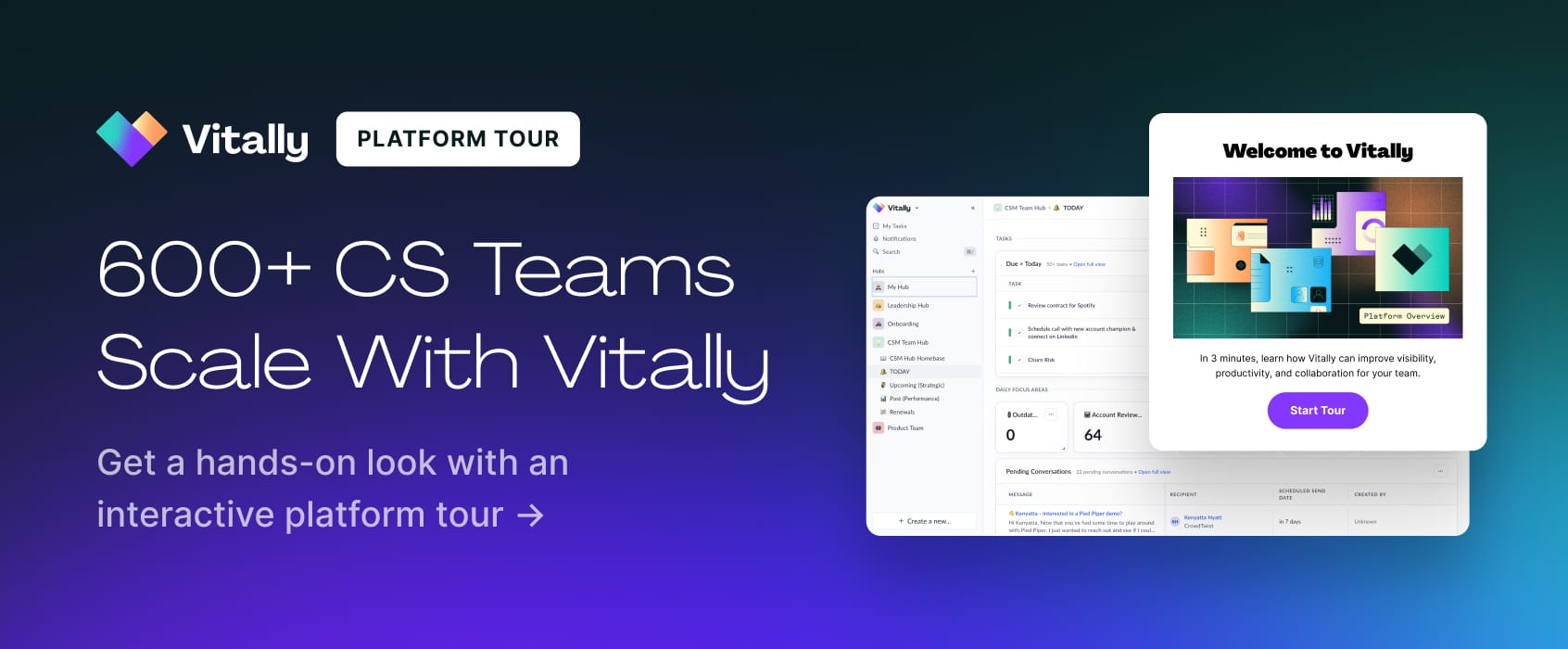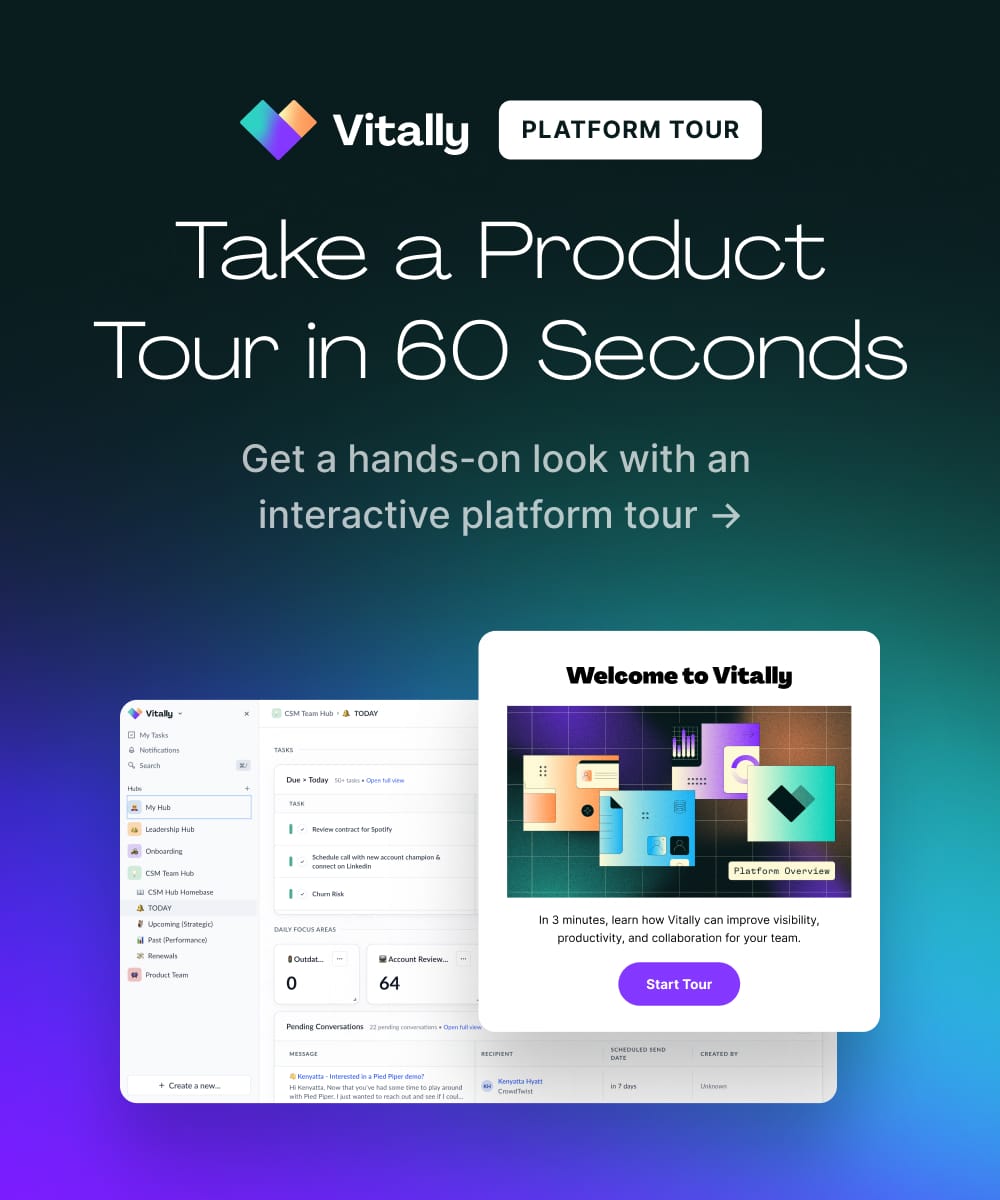
Which stage is your customer onboarding on in the Customer Onboarding Maturity Model?
For business-to-business (B2B) companies, it’s hard to overstate the importance of onboarding new customers. Once Sales teams get the customers in the door, onboarding is the key to whether or not they stick around. Yet, companies exist on a spectrum of sophistication when it comes to their onboarding practices.
Some companies reinvent the wheel every time a new customer joins and then rely on one-to-one (1:1) interactions, whereas others deliver consistent and repeatable processes during onboarding to generate mutual value for clients and their own companies.
When I sit down with B2B clients, I work with a model to capture the maturity of their customer-facing programs. By identifying your current stage — Reacting, Performing, Scaling, or Optimizing — and taking steps to reach the next level, you can deliver value to your customers faster and ensure your team members are working efficiently with the resources they have.
What Is a Customer Onboarding Maturity Model?

Just like on a map, you need to know where you are before you can get to the next place. The Customer Onboarding Maturity Model shows your company where you are in the development of your customer onboarding programs, and where you should go next. It helps you set better expectations for Customer Success and Onboarding teams and also for management; you don’t jump from being reactive to optimizing overnight.
The Stages
1. Reacting
In the Reacting phase — common in startups or organizations transitioning to new business models — there are no processes; everything can be reactive and last-minute. Your company might not have a dedicated Customer Onboarding or Success team, so whoever's available is parachuted in to resolve problems as they come up. Every customer gets a different experience because consistent processes haven’t been defined.
Another way to think about this stage is being stuck in “high touch.” Your customers might feel like they are getting white glove treatment, but it is simply not sustainable. Treating every customer as a “special snowflake” often leads to burnout and high turnover rates among both employees and customers. If you find your team constantly putting out fires and scrambling to address issues as they come up without a proactive approach, you are likely in the Reactive stage.
2. Performing
When you move from ad hoc to standardized processes, you enter the Performing stage. You create, define, and operationalize your processes, and build playbooks for how to onboard new customers and how to deal with specific Customer Success challenges. Your company might start to form dedicated customer onboarding teams. Internally, everyone knows their role and what to do, and customers have a consistent experience.
While playbooks become crucial, reliance on manual efforts can make this approach unsustainable as your customer base grows. If your company has established best practices but still relies heavily on manual interventions, you may be stuck in the Performing stage.
3. Scaling
The Scaling stage is marked by a company’s rapid growth and the need to handle a larger volume of customers efficiently. As a business grows, adding more employees isn't a sustainable solution. I like to say, “What got you here won't get you to the next level.” Now, it’s time for a one-to-many (1:M) approach. Let's say, instead of doing one-to-one training on a product, you offer product walk-throughs and workshops three times a week, for different customers to join.
In the Scaling stage, you start leveraging technology to address customer and internal needs. How do you deliver a great customer experience with less human touch? Customer Success as an industry is leveraging AI and other 1:M approaches like in-product guidance and learning management systems to scale and deliver value.
Related: What’s Scaled Customer Success and Why Does It Matter?
4. Optimizing
At the Optimizing stage, the customer onboarding team can demonstrate the impact of customer onboarding on the business bottom line — perhaps by quantifying decreased customer support costs and increased customer retention and lifetime value.
As an industry, Customer Success has been shy about looking at the metrics and showing our impact. The customer onboarding team can say something along the lines of, “By following these consistent processes or by deploying the scalable approach, we have saved the company this much money during onboarding, or by taking 20% less time to deliver meaningful value to customers, they are logging 30% fewer support tickets, thereby saving the company X amount of dollars a year and expanding at a higher rate, bringing in additional compounding revenue.”
In this way, the team is showing correlations on the impact of customer onboarding on the company's growth strategy.

Case Study
I worked with a company in the health tech industry. They had an implementation team, but they were pulling out their hair, trying to implement their complex product. The reason? Sales Reps were selling to any customer leaving the implementation team to deal with poor-fit customers.
Customers were frustrated because they were waiting for the promises to be fulfilled that the sales reps made. As a result, they were pausing and canceling their subscriptions, and then sales reps, executives, buyers, and the legal team all had to come back in and rewrite contracts.
They were in the Reacting stage — always dealing with escalating issues rather than being proactive. These inefficiencies, all the reworks and redos, were costing this company half a million dollars each year.
We started creating processes or moving into the Performing stage. It wasn't just processes for the onboarding team. It was a process to define swimlanes from the Sales Reps to the Customer Success team to the Implementation Managers.
We designed playbooks that defined who was involved and when along the onboarding journey and beyond. Each team engaged during the right moment to create a harmonious experience for the customer. The result was that we reduced the time and cost to onboard customers by more than 20%, with a lot few customer pauses and cancellations.
You Can’t Skip a Step
A lot of people look for technology before they define the process. They want technology to be the magic bullet, so they skip right over the Performing stage and straight to Scaling. They invest a lot of money in technology, spend time implementing it, and then incur additional costs ripping it out because it didn't magically improve everything.
You’ve got to do the work. Defining your processes is a critical step to finding the right technology to do that job faster. Once you build those processes in the Performing stage, you understand it from that level. Then you pull in the tech where it makes sense and keep that human touch where it makes sense. In a world of digital and AI, the human touch is more and more and more valued.
Wrap-up
Optimizing the customer onboarding stage is incredibly valuable because it helps Customer Success teams solve so many problems at once. It gets Customer Success and implementation teams out of the reactive, firefighting mode that so often leads to burnout. It gives new customers a more standardized experience with fewer friction points. And since onboarding sets the tone for the rest of the relationship, it’s your first defense against churn, which can make or break B2B businesses.
I hope the Customer Onboarding Maturity Model framework allows your team to identify what can be improved about your current onboarding process while giving you an actionable roadmap for becoming much more effective at this critical touchpoint. Good luck!







.png)

